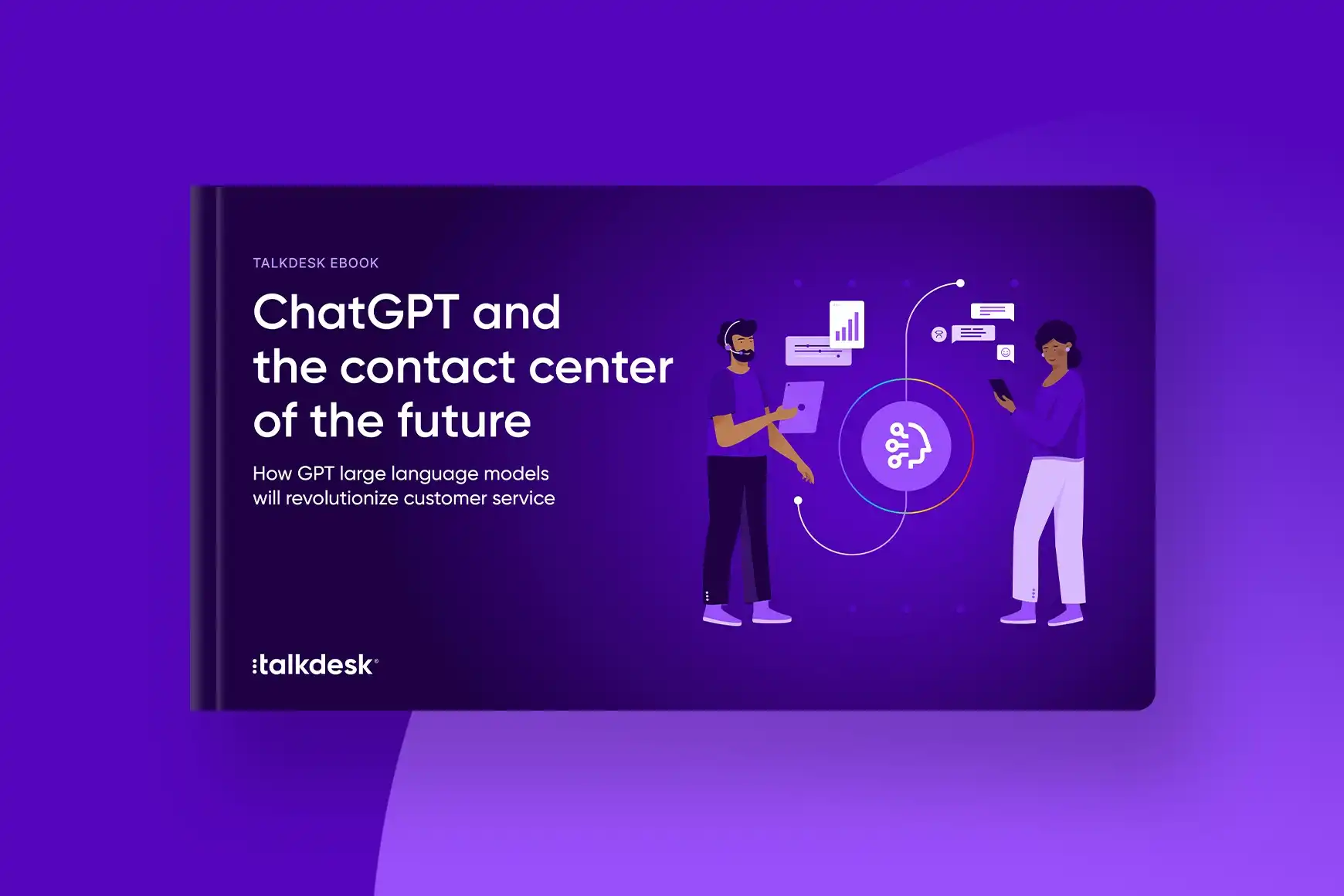How to Enhance Service Level in the Call Center

By Shauna Geraghty
0 min read

Service level is an important KPI that measures the degree of accessibility of a call center to their customers. Service level can have a large impact on service quality, and as a result, revenue. It is therefore imperative that management constantly measure service level over time and engage in preventative or reparative tactics to help enhance service level when it slips. The following are 17 tips, tools and techniques that will allow you to enhance service level.
1) Optimize workforce management
Workforce management involves forecasting call volumes, scheduling the optimal number of agents to work at any given day or period of time throughout the day, creating schedules for each agent and making adjustments to the workforce as needed. This is a complex task that involves taking into account:
- Historical call volume trends
- Target service level
- The number of agents available (i.e. accounting for agents arriving late, absenteeism, sick days, vacation days, etc.)
- Upcoming marketing campaigns, product promotions and product launches
- Time agents spend on calls and after call work
- Time spent providing support on different channels (i.e. chat, email, phone, social media, etc.)
- Breaks, trainings and meetings
It is also essential that managers build in some flexibility when scheduling their workforce and anticipate that unplanned events will happen (i.e. agents call in sick, have to leave early, take longer breaks than expected, require more training, etc.) and that call volumes will fluctuate as they are somewhat unpredictable.
When workforce management is not optimized, it can have a large impact on both service level and the company’s bottom line. Understaffing results in fewer agents fielding calls, longer wait times and a decline in service level. Overstaffing results in more available agents, shorter wait times and an increase in service level, however overstaffing is more costly and can negatively impact the budget. Thus, optimizing workforce management is the key to enhancing service level.
2) Optimize occupancy rates
Occupancy rate is the percentage of time that agents are performing work-related duties (i.e. talking with customers, performing after call work like updating databases, sending emails, etc.) vs. the total time that they are logged in. An example of an occupancy rate equation is:
Occupancy rate = (total call handing and after call work time – idle time) / total logged in time
Occupancy rates are typically inversely proportional to service level. High occupancy rates indicate that agents are less available to field calls, callers wait longer and service level declines. Low occupancy rates indicate that agents are more available to field calls, calls are answered immediately and service level increases.
Occupancy rates that are too high (i.e. over 90%) are indicative of an extreme workload for agents. This typically results in increased agent stress, decrease agent effectiveness, decreased agent satisfaction and increased agent turnover. Occupancy rates that are too low are typically indicative of less than optimal workforce management and can increase costs (as more agents are on staff than necessary), increase agent boredom and decrease agent satisfaction. Thus, management should strive to create a balance between optimizing occupancy rates and service level.
3) Increase schedule adherence
While workforce management is essential to ensuring that the optimal number of agents are scheduled to field calls, service level will not improve unless the agents adhere to their designated schedules. When agents take longer on breaks, take their lunch at an unscheduled time or spend time at their desk on non-work related tasks (i.e. checking social media sites instead of fielding calls) fewer agents will be available to field calls than planned and service level will decline.
It is essential that managers constantly monitor schedule adherence and make staffing adjustments accordingly. Management should also expect that agents will not completely adhere to their schedule 100% of the time and taking this into account when making staffing decisions. These changes will positively impact both occupancy rates and service level.
4) Improve call forecasting
Predicting the overall volume and the arrival patterns of calls throughout the day can be a challenging task. This involves analyzing historical ACD data (i.e. call volume, handle times, arrival patterns, etc.) as well as taking into account:
- Upcoming marketing campaigns and product promotions
- Repeated events (i.e. dates customers are charged, billing due dates, etc.)
- Product launches, glitches, bugs, etc.
- Market fluctuations and industry trends, events and activities
- Weather patterns, natural disasters, power outages, major events (both local and global), etc.
- Holidays, days of the week, time of the day
The more comprehensive your call forecasting, the more accurate your workforce management and scheduling and service level will improve.
5) Reduce agent attrition
Agent attrition is the percentage of agents that leave their position (i.e. quit, fired or promoted) during a period of time. Decreasing agent attrition rates will ensure that your team will be more proficient with handling calls, navigating your business tools and up-to-date on the ins and outs of your company and product. This will increase their overall efficiency and effectiveness, customer satisfaction and their availability to field calls. Taken together, all the aforementioned factors will contribute to enhancing service level.
6) Enable agent call-backs
When waiting time is increasing and service level is declining, a quick, in the moment solution to increasing service level and customer satisfaction is to enable agent call-backs. Call center software that informs the caller of the anticipated wait time and provides them the option to opt out of waiting in the queue and receive a call-back from the agent can dramatically improve service level. When implementing this tool, it is important for managers to correctly classify the call (i.e. answered vs. abandoned) so their service level performance metric is accurate.
7) Enhance first call resolution (FCR)
Enhancing FCR can significantly increase service level. When callers are routed to the most appropriate agent to meet their needs and their agent resolves their issue without transferring them, not only is the customer more satisfied (and less likely to callback about the same issue) but the agents within the team will be more available to field calls. Both factors, more satisfied customers and more available agents, will enhance service level.
8) Enhance customer satisfaction
Customers that are not satisfied with the service they receive are more likely to callback about the same issue, to ask to be transferred to an agent with more experience or to ask to speak with a manager. All of the aforementioned scenarios can lead to an increase in average handle time as well as the volume of calls and if workforce management doesn’t take these factors into consideration, service level will decline. Thus, enhancing customer satisfaction can dramatically improve service level.

EBOOK
ChatGPT and the contact center of the future
Find out how this exciting new technology will change everything from conversational AI to the role of the contact center agent.
9) Provide multi-channel support
Offering support via email, chat, self-help guides and FAQ posted online can reduce the volume of inbound calls to your call center. When offering multi-channel support, it is important to respond to support request via chat and email in a timely manner. Otherwise, customers are likely to also call your support center, two tickets will be open for the same issue, productivity will decline and so will service level (as valuable time will be diverted from answering calls to replying to a redundant support request).
10) Enhance agent competency
Agent competency has a direct effect on service level. Competent agents are more likely to resolve the caller’s issue quickly and comprehensively, increase customer satisfaction, decrease the likelihood that the customer will callback and decrease the likelihood that the call will transferred or escalated to a manager. Additionally, competent agents are more efficient and accurate with data entry when updating business tools, thus reducing after call work time, increasing their availability to field calls and enhancing FCR when the caller calls back about another issue (as the information in the system will be up-to-date for the next agent). Finally, skilled agents will also reduce the workload burden on other departments (i.e. tech support, sales, etc.) as they will be more likely to meet these basic needs without having to transfer the call. Taken together, the more competent the agent or team, the higher the service level.
11) Employ on-call agents
No matter how comprehensive your workforce management strategy, there is inherent variability in call volume and schedule adherence within a call center. Managers should prepare for this by employing a workforce of on-call agents, or cross-training agents within the company to field different types of calls (i.e. support, IT, etc.). Hiring an at-home workforce of on-call call center agents can be a very cost-effective solution to this problem. Additionally, utilizing browser-based call center software that has pay-as-you-go options and charges per hour of usage can also be extremely useful when employing an at-home workforce of on-call agents.
12) Accurately measure service level
Only when service level is carefully defined and accurate measured is it useful. It is important to analyze how your team measures service level and make changes when necessary.
13) Track service level over time
The key to making data-driven decisions to enhance service level is to track changes in service level, both in the moment and over time. Having call center software that allows you to customize your service level time threshold, track service level over discrete time periods that are most meaningful to your company and monitor changes in service level in real-time is essential to this process.
14) Learn from changes in service level
Monitoring service level over time and analyzing changes will allow you to engage in more effective troubleshooting, make data-driven decisions and enhance workforce management. All will go a long way to enhancing service level.
15) Educate you entire team about service level
It is essential that you train your team about:
- What service level is
- How service level was defined
- How service level is calculated
- What their service level objectives are
- How they can meet their service level objectives
- What happens when they fail to meet their service level objectives (i.e. recruit more staff; ask them to stagger their breaks, etc.)
- What happens when they meet their service level objectives (i.e. bonus, leave early, longer lunch break, etc.)
By doing so you are increasing the likelihood that they will make in the moment decisions that will enhance service level and may also lead to an increase in schedule adherence as they will develop more insight into workforce management.
16) Tie agent feedback to service level
If you measure agent or team performance based on service levels, giving them concrete evidence to support your feedback is extremely effective in eliciting change in their behavior or when offering a reward. Agents that know what is expected of them (i.e. service level objectives are clear), who can make changes in their approach to answering calls based on readily available service level data and who’s performance evaluation is tied to concrete data (such as service level) will be better equipped to make strategic changes that will positively influence service level for their department and your company as a whole.
17) Enhance self-service options
Allowing customers to help themselves can drastically increase service level as it will reduce call volume and free up more agents to answer calls quicker. One strategy is to use a self-service IVR. You can upload pre-recorded messages (about your business hours, directions to the office, etc.) into the IVR that will answer some of the most common (and simple) questions. Automating the customer support process frees up your agents to handle more complex calls and increases service level. Another strategy is to enhance your FAQ , resource library and user-friendliness of your website. When your customers can easily find the answers to their questions online, they will be less likely to call your company. Taken together, these two methods will significantly reduce call volume and free up agents to field more important calls, thereby increasing service level.
18) Optimize call center software
Optimizing your call center software can go a long way in increasing service level. By implementing software that has:
- A comprehensive ACD to accurately measure call volume, handle time, calls received and calls abandoned
- An effective IVR to partially automate the support process and decrease call volume
- Skills-based routing to increase customer satisfaction and enhance FCR
- Real-time and historical reporting so agents and managers can keep track of changes in service level
- An easy to use interface so agents have the most relevant information at their fingertips
- Integrated business tools so agents don’t have to waste time updating the same information into different business tools
- Browser-based technology so on-call agents can work from home
- Pay-as-you-go pricing so you are only charged for on-call agents when they work you will dramatically increase the efficiency and effectiveness of your team and service level will increase.
The 18 aforementioned tips, tools and techniques will go a long way in ensuring that your team is optimizing service level. Enhancing service level can have a large impact on service quality, company reputation and revenue, thus it is an important KPI to measure and work to optimize overtime.








